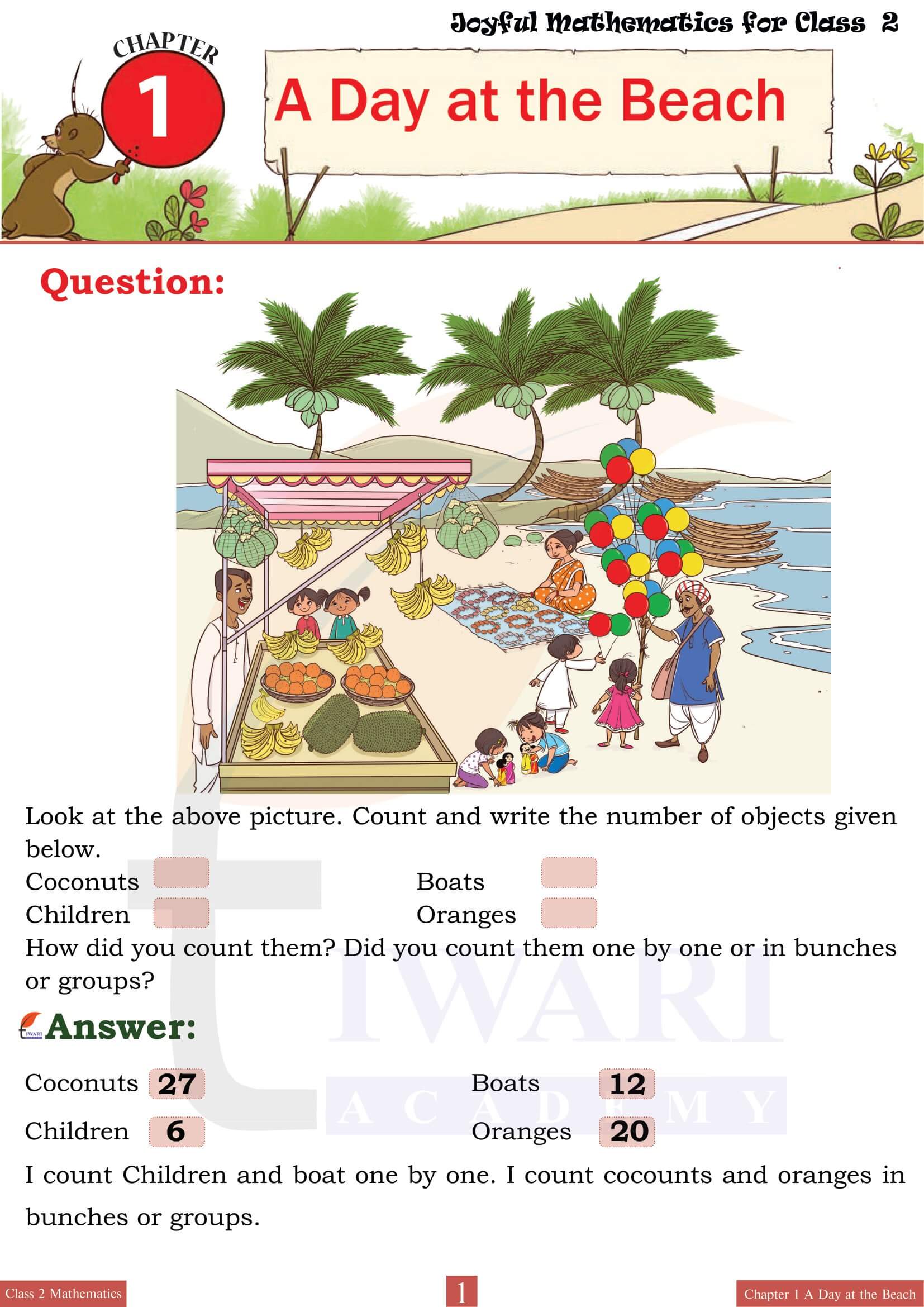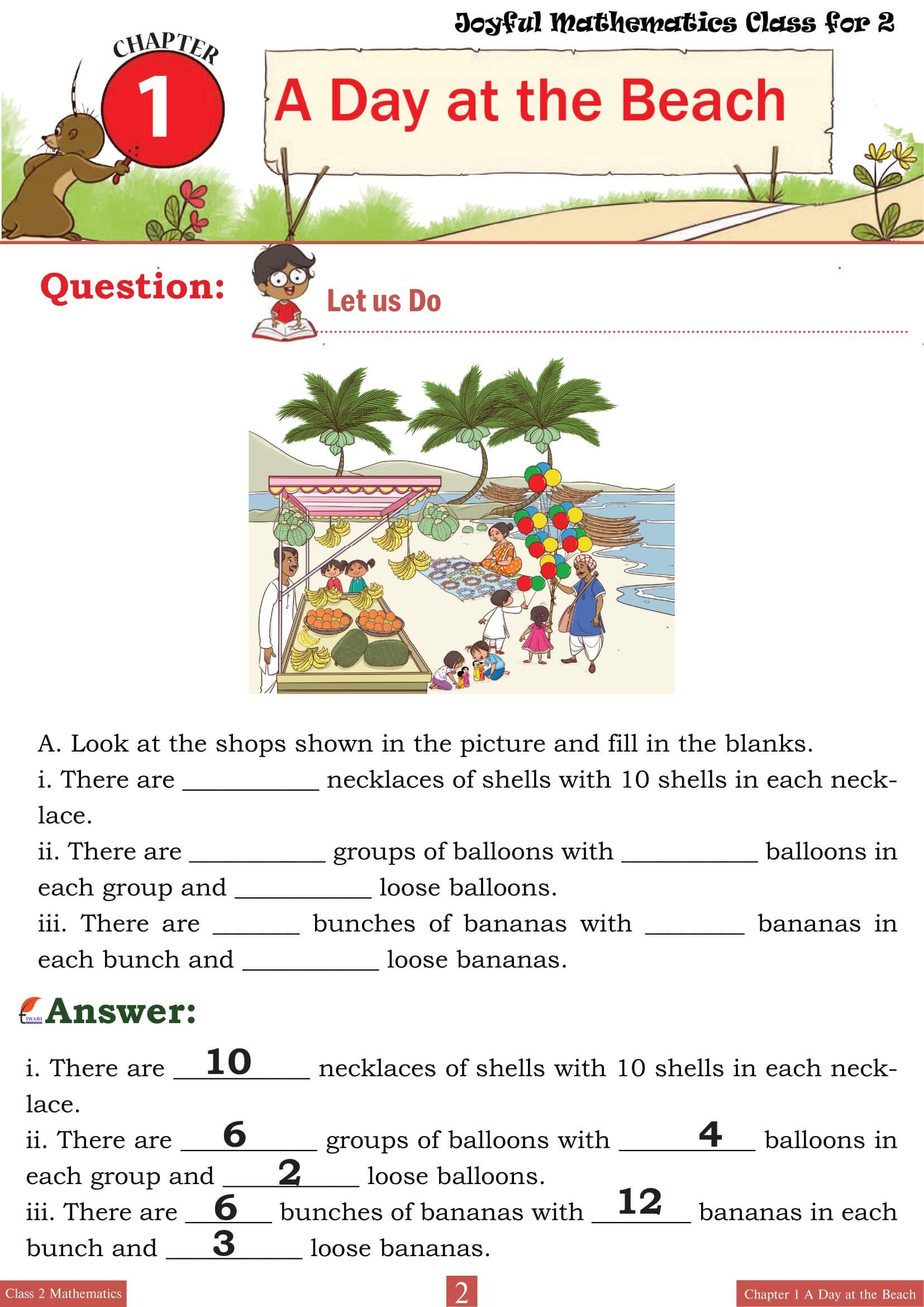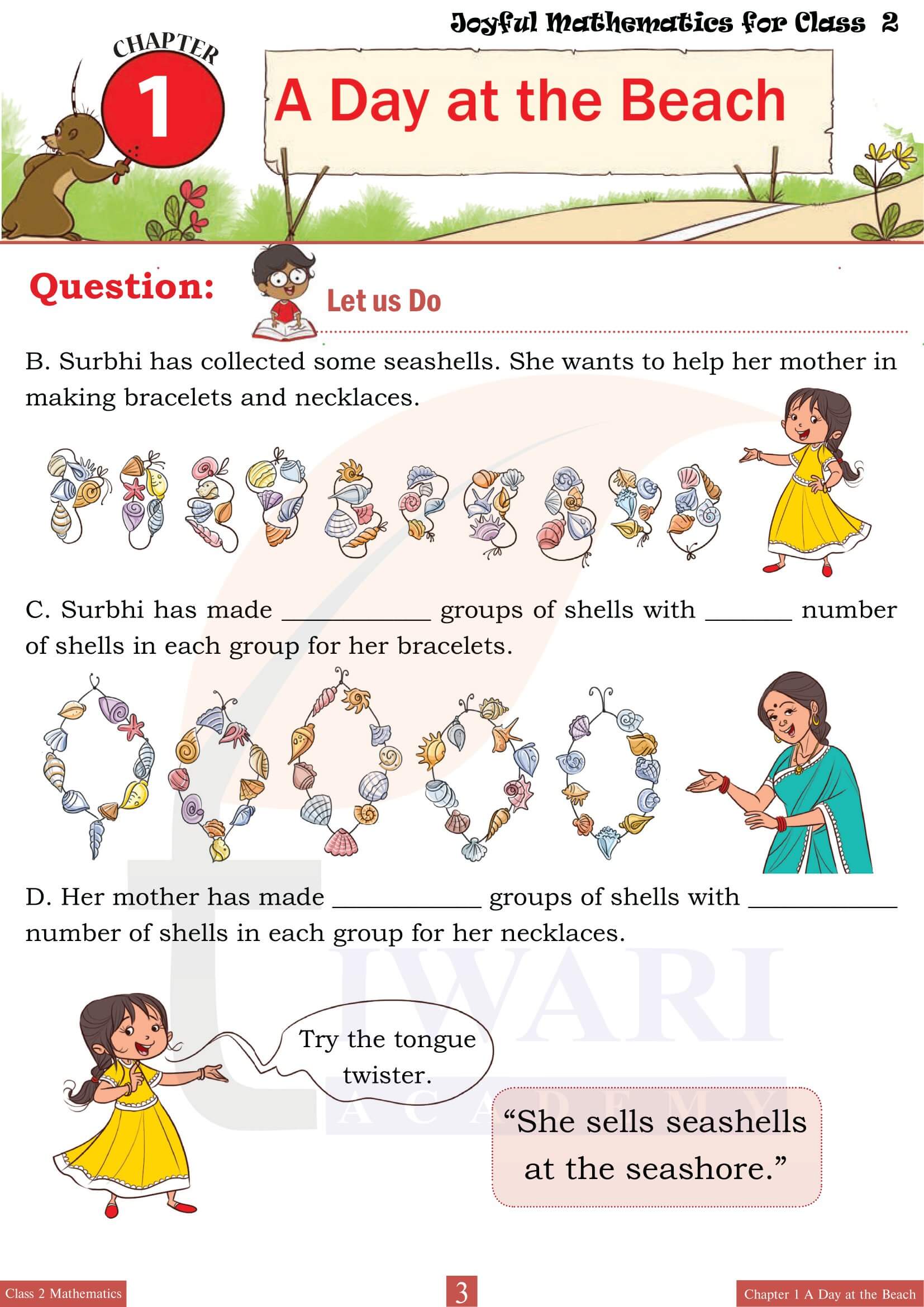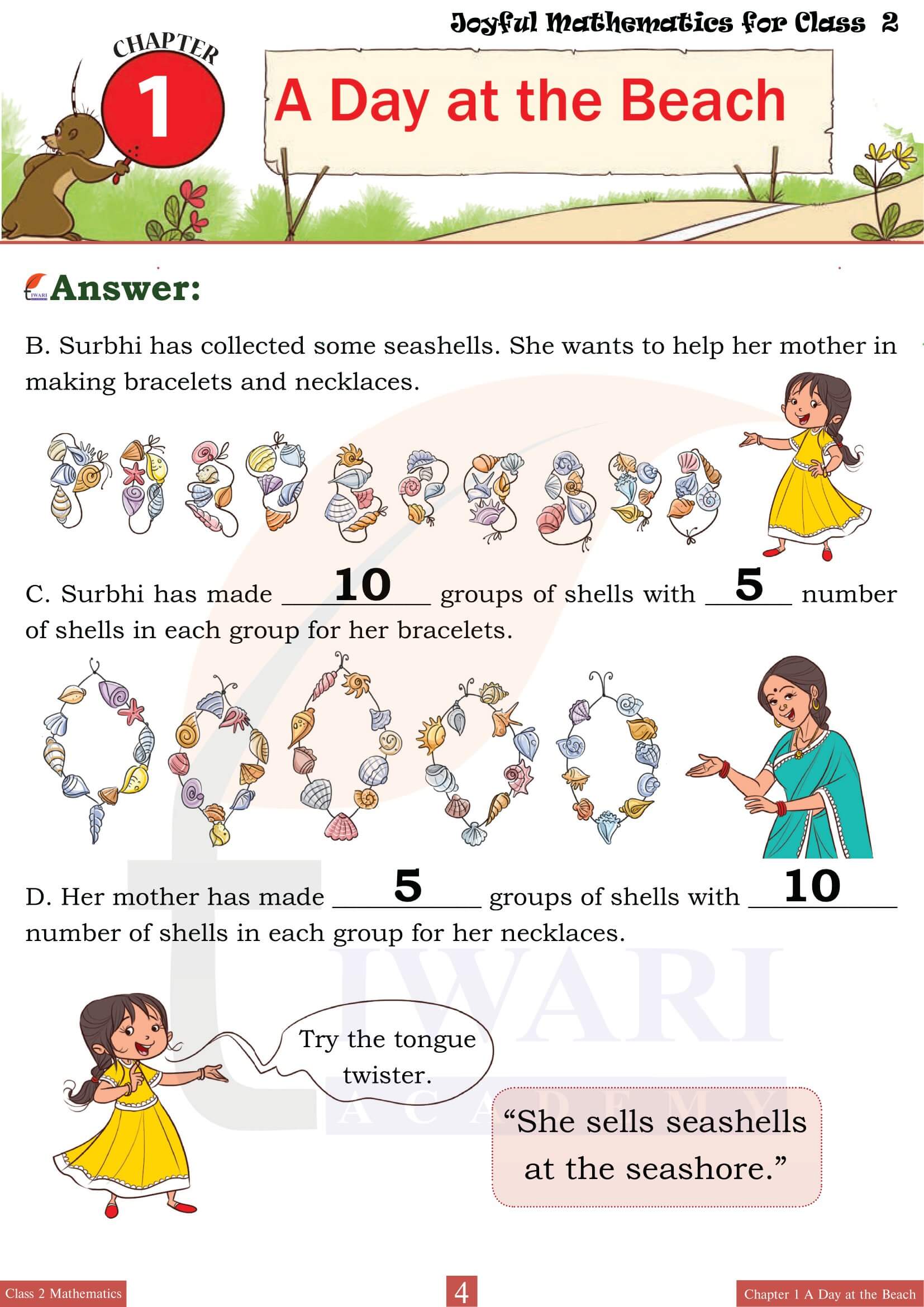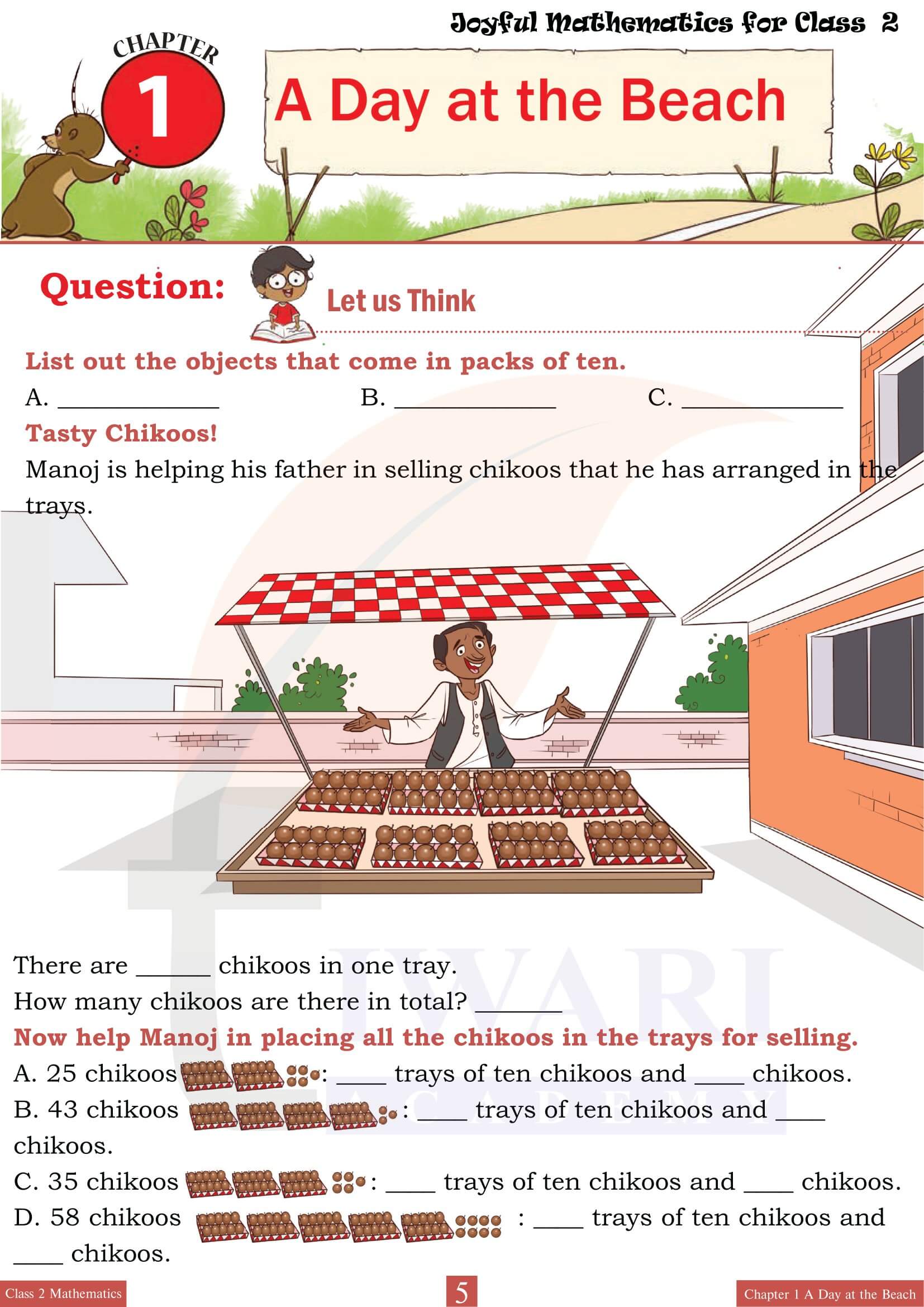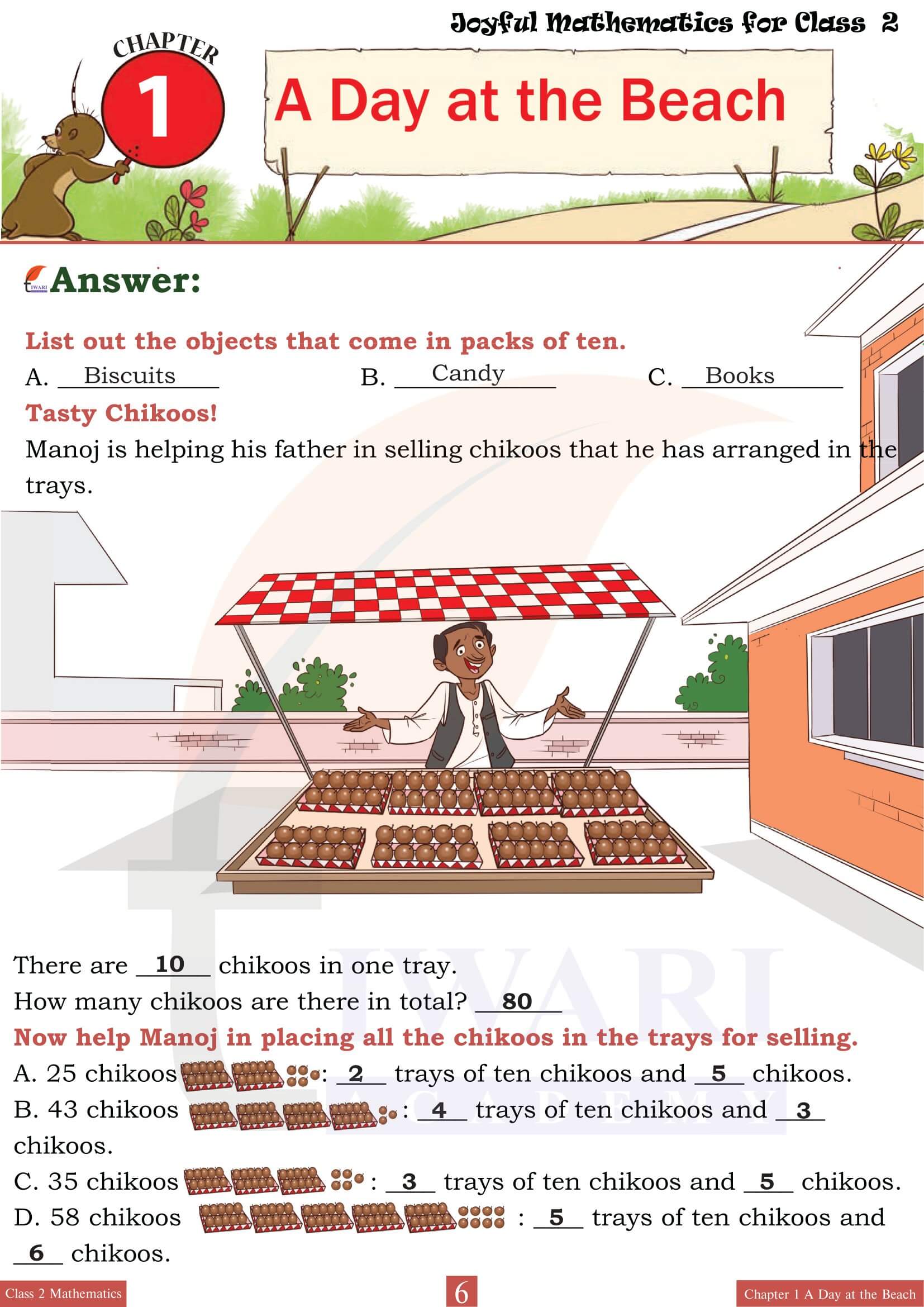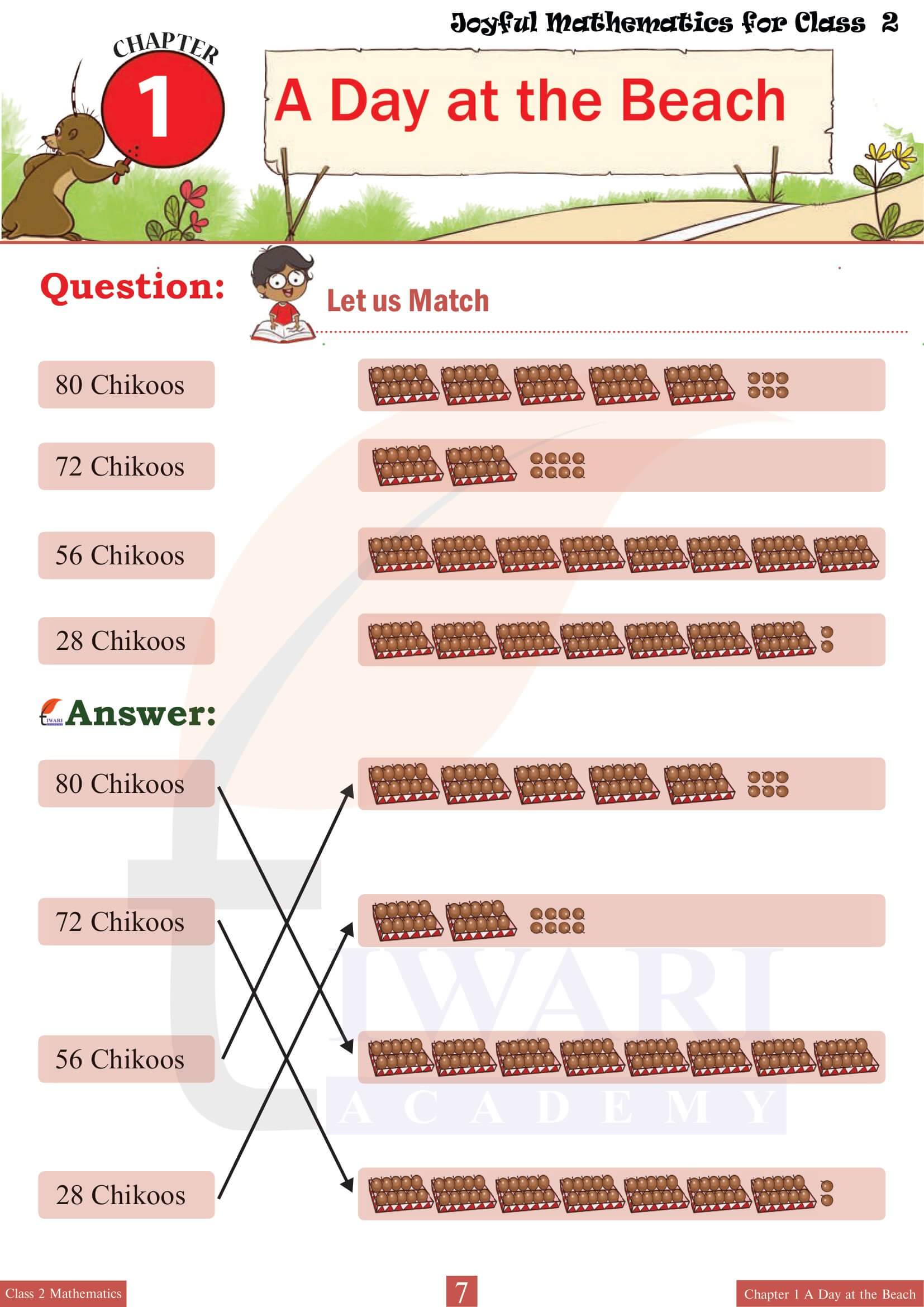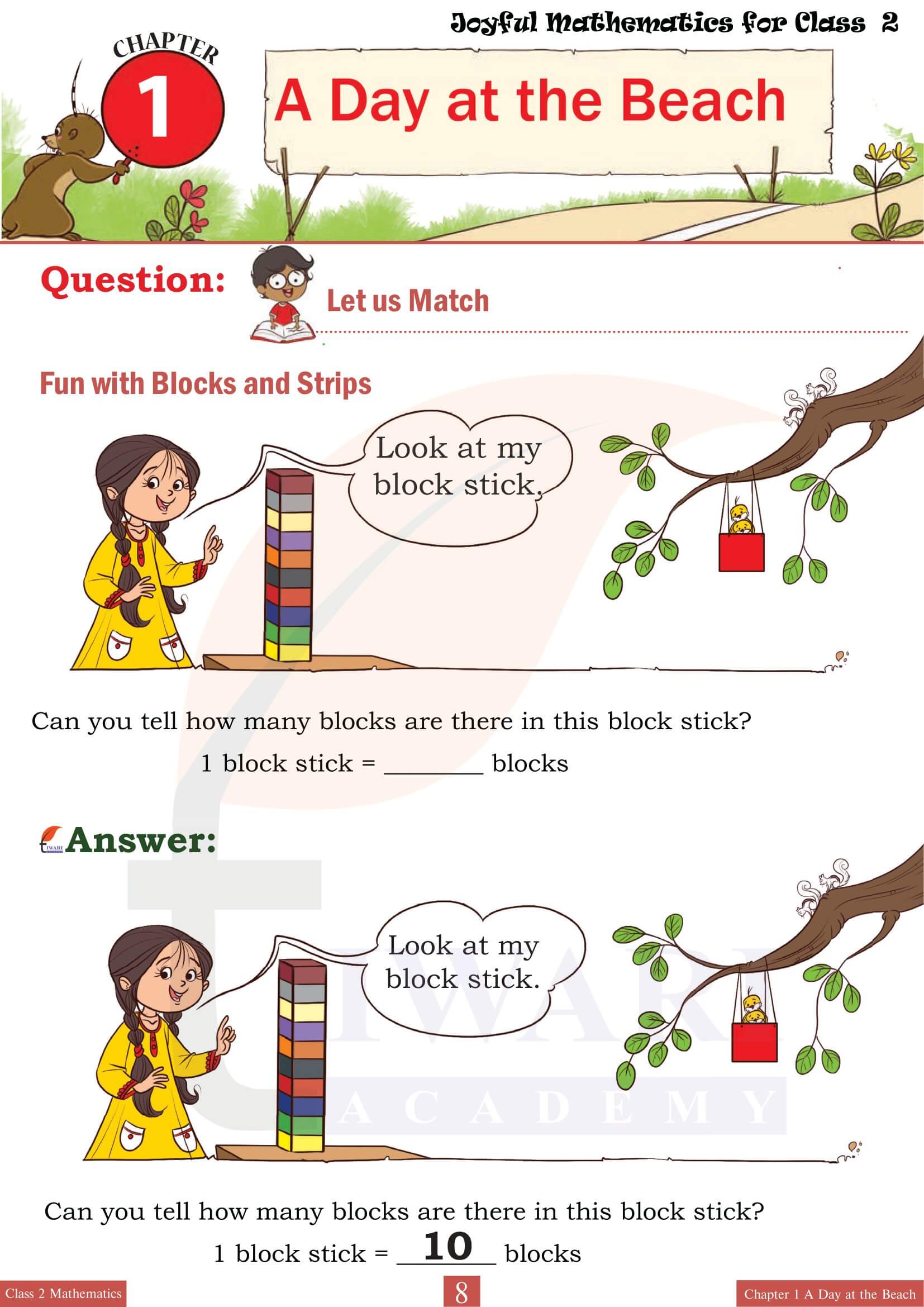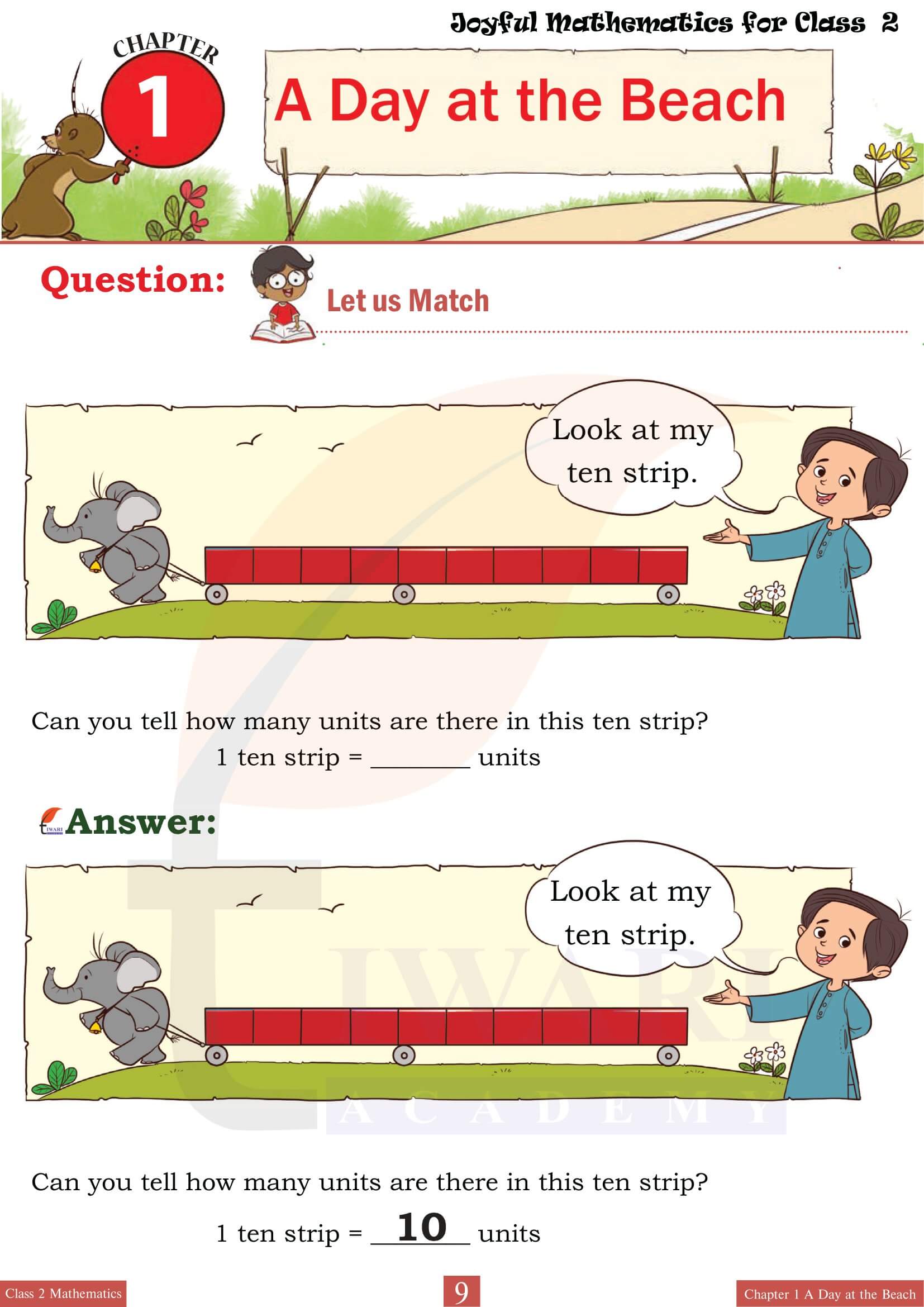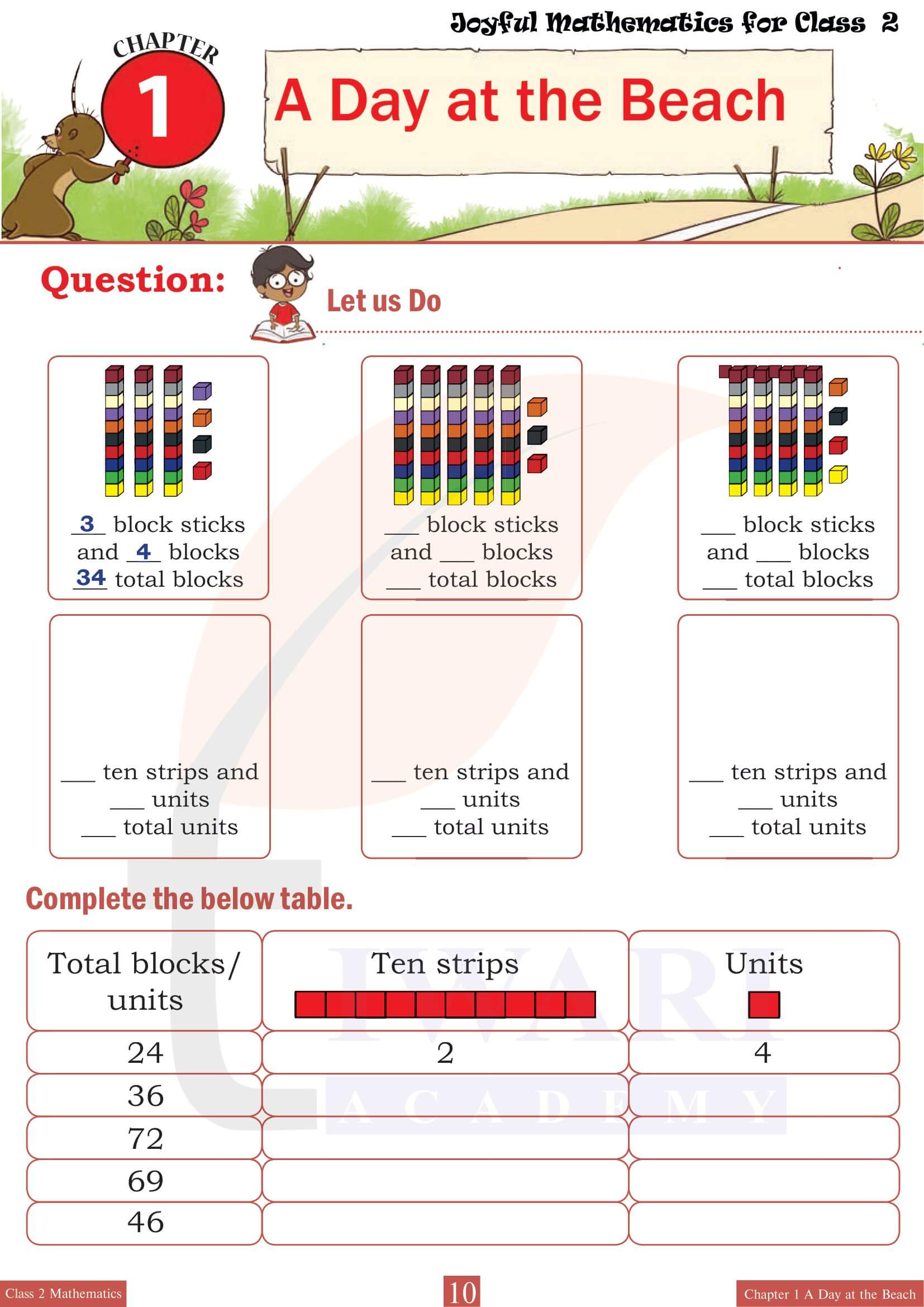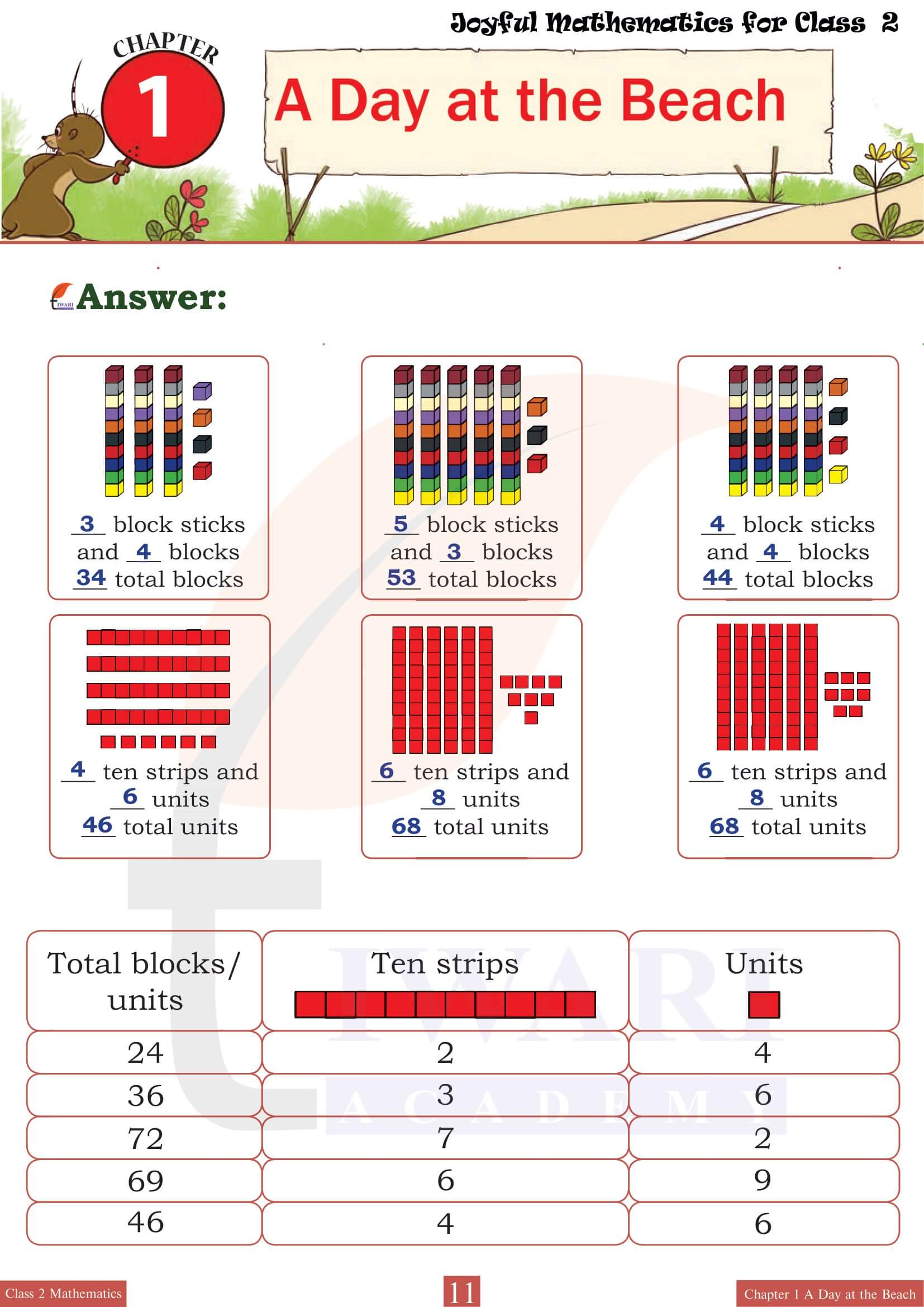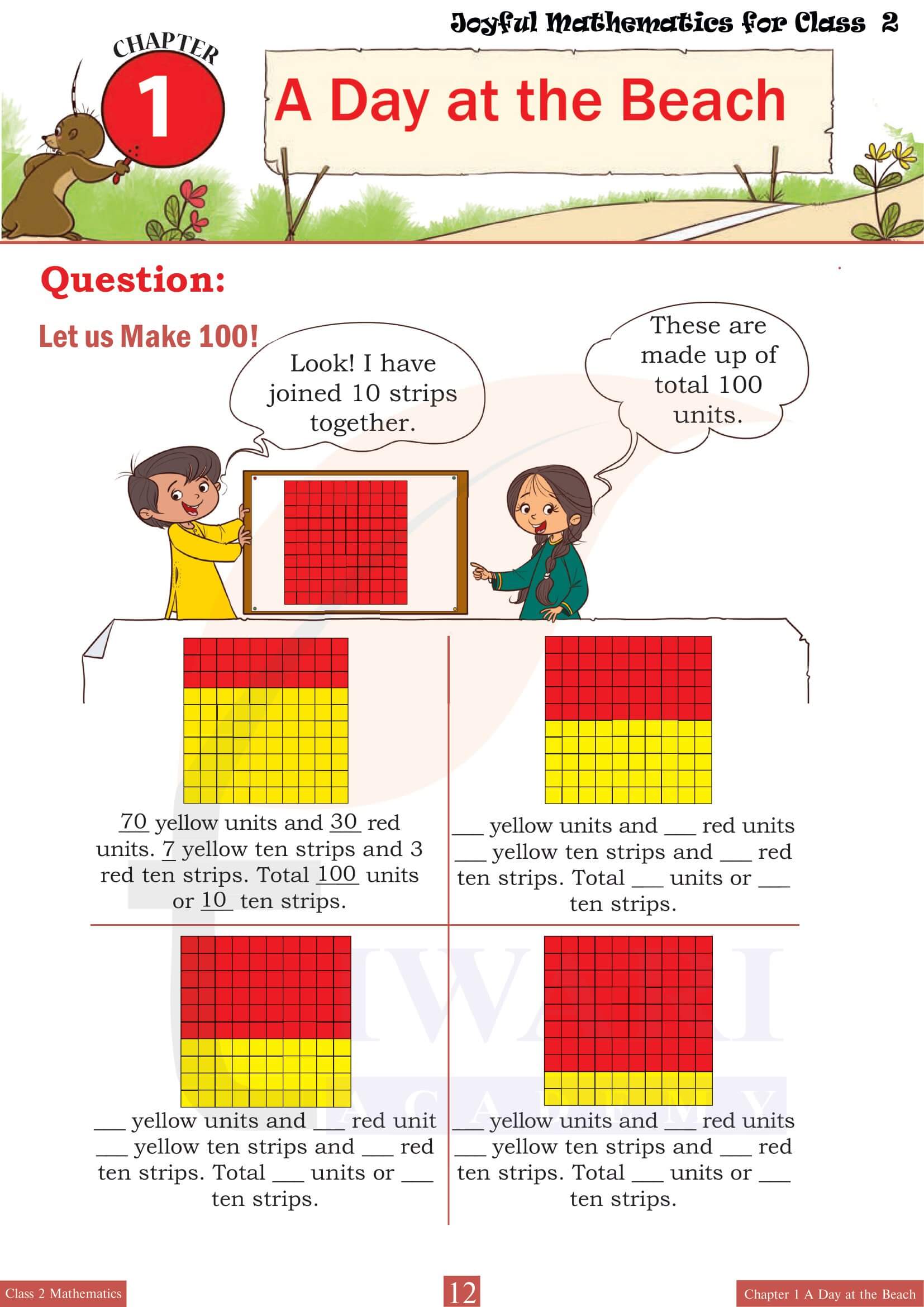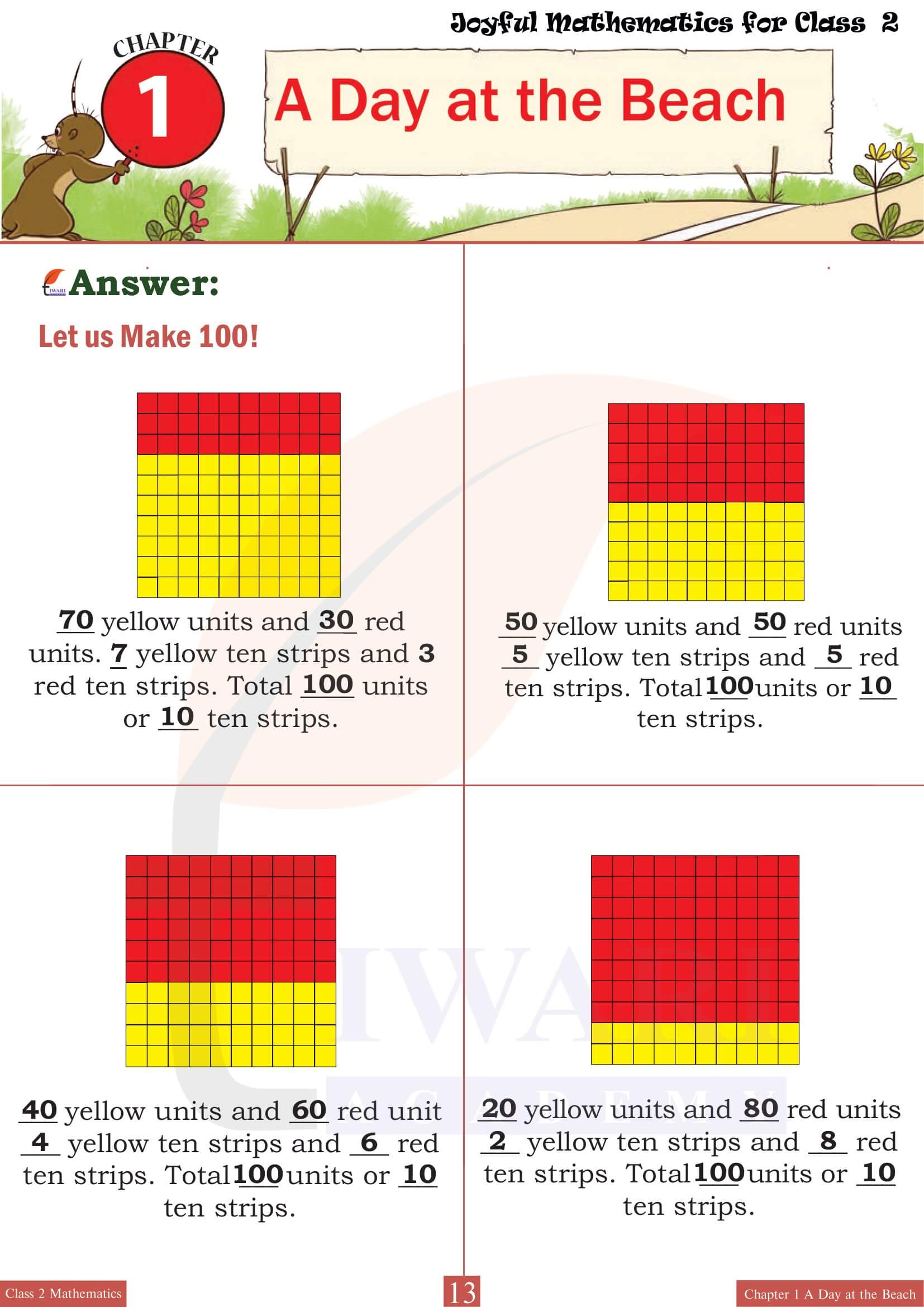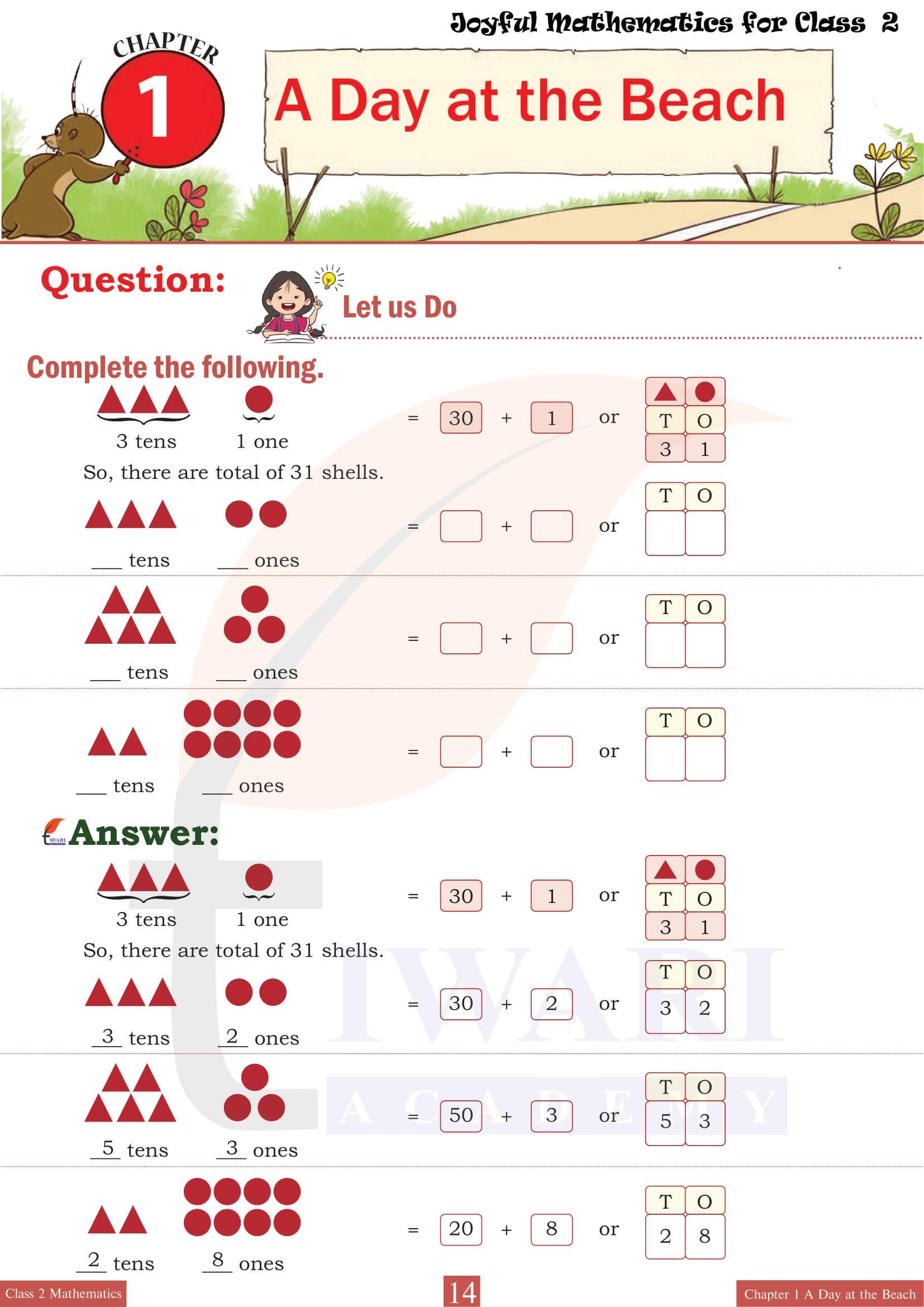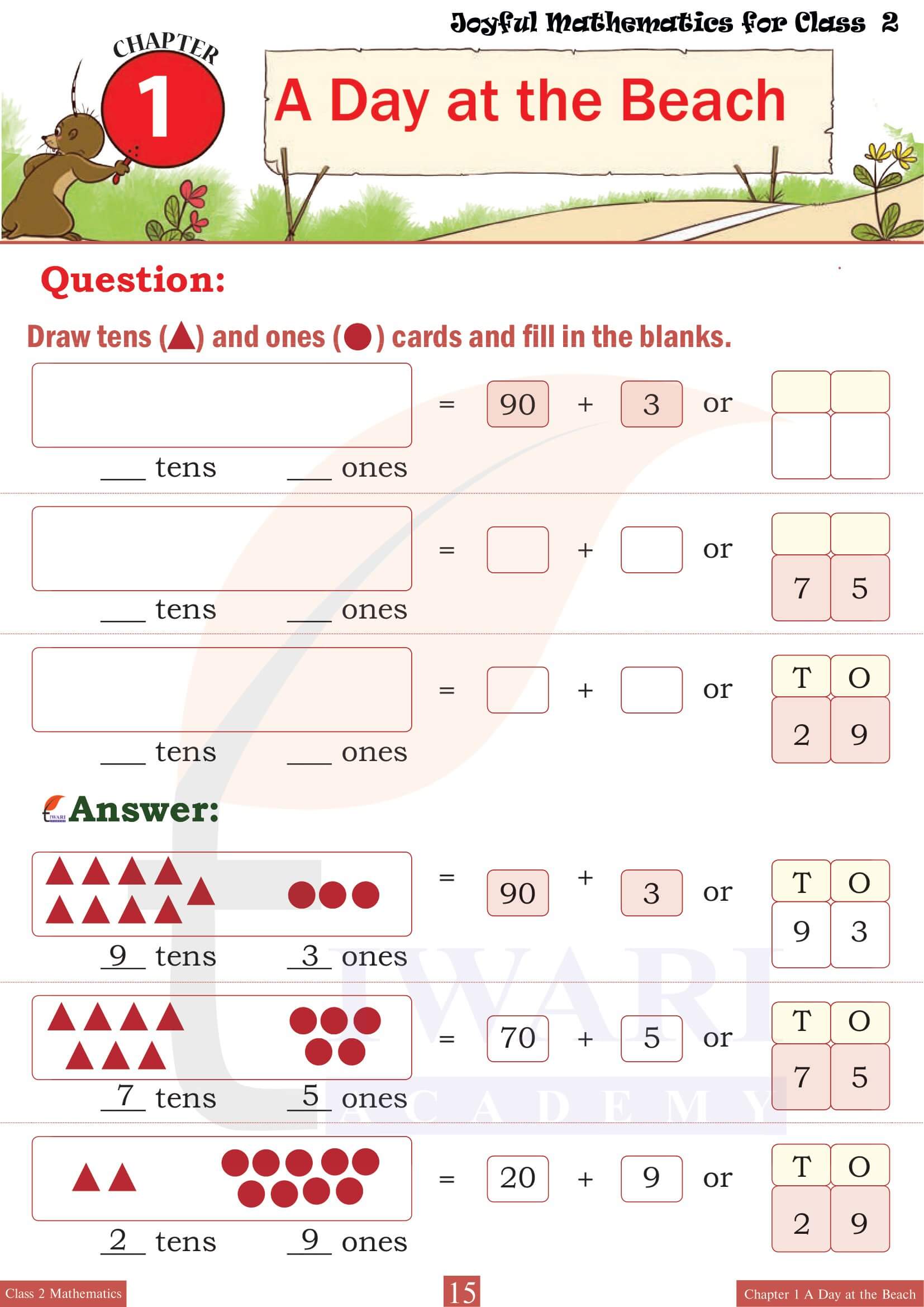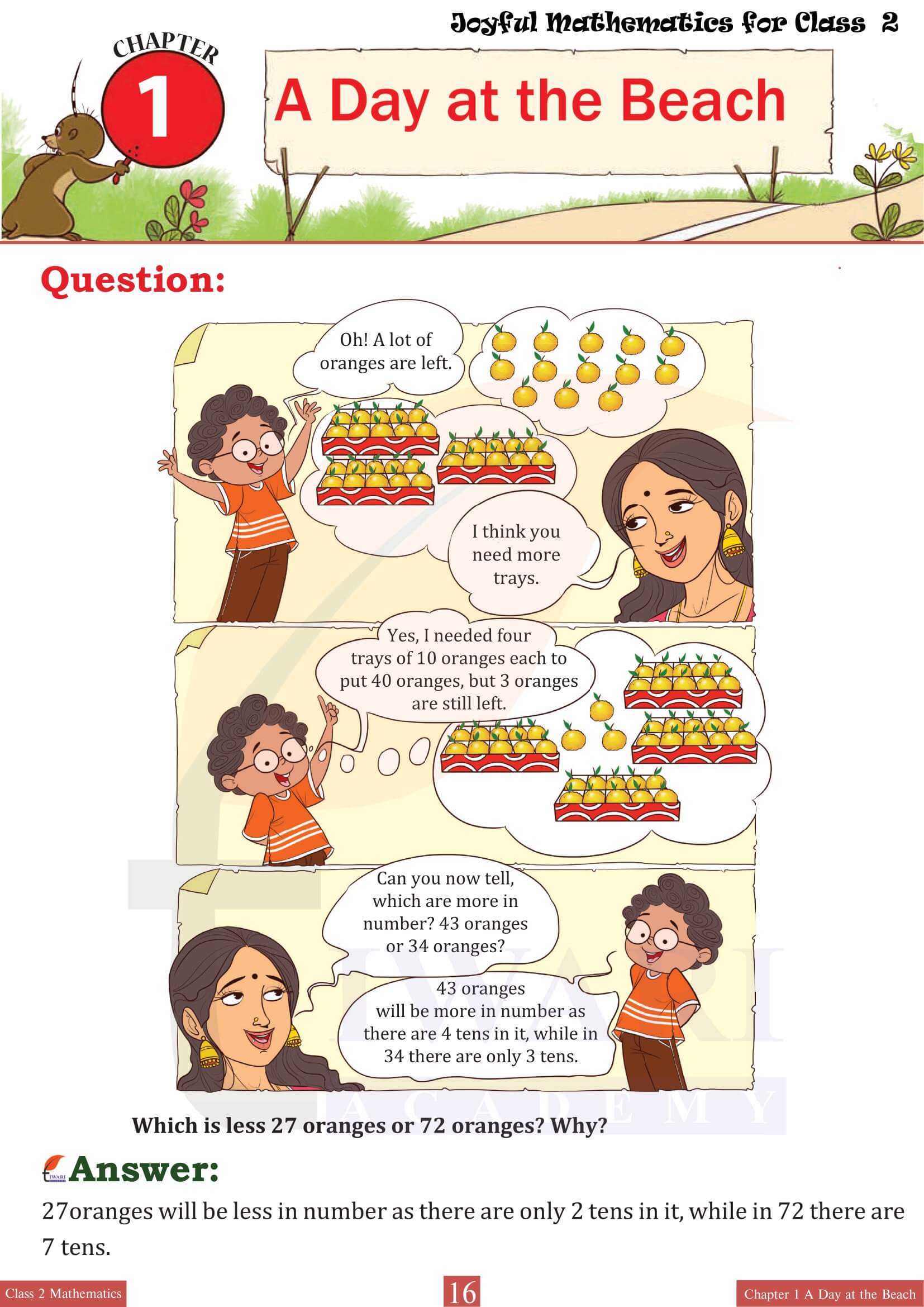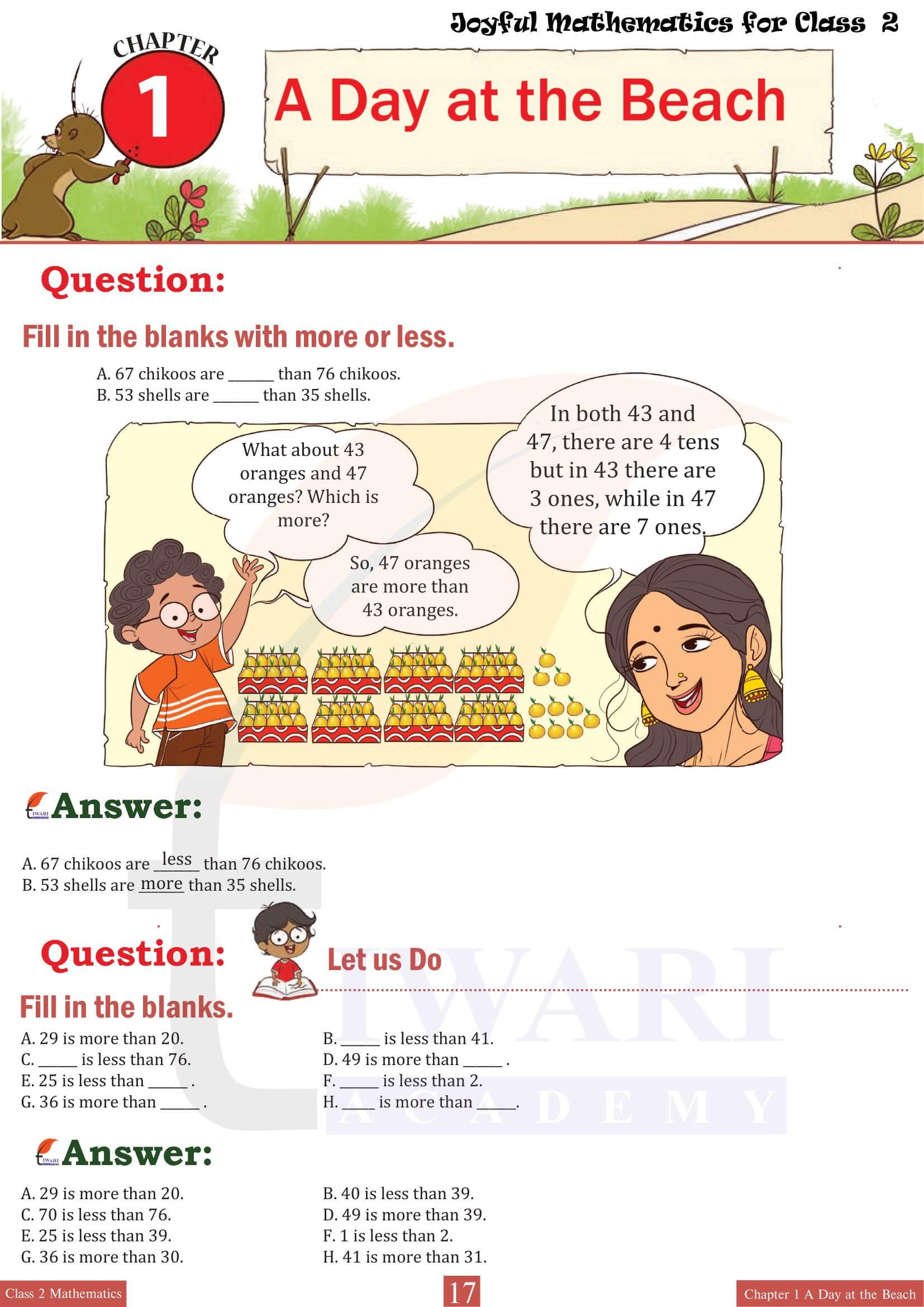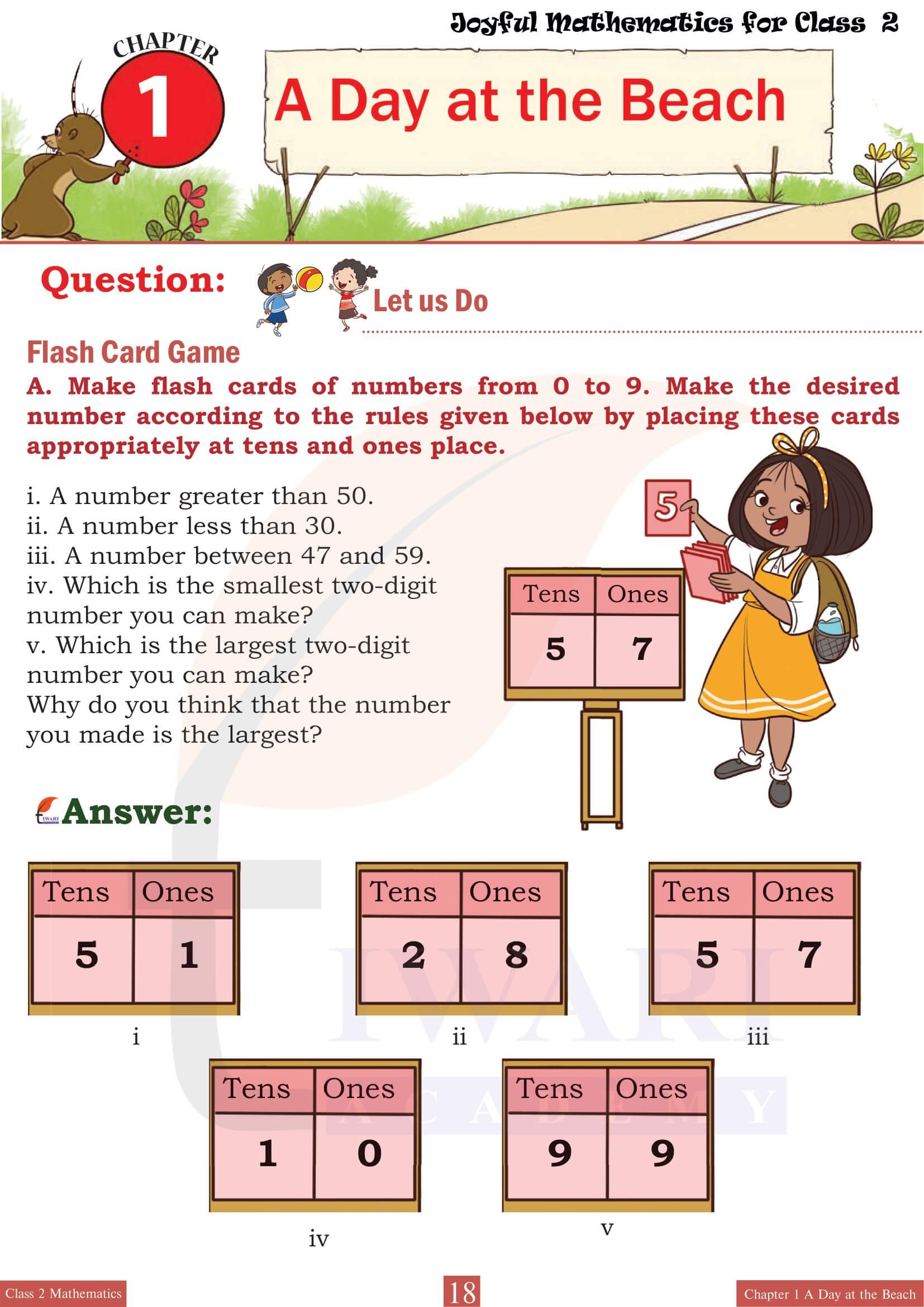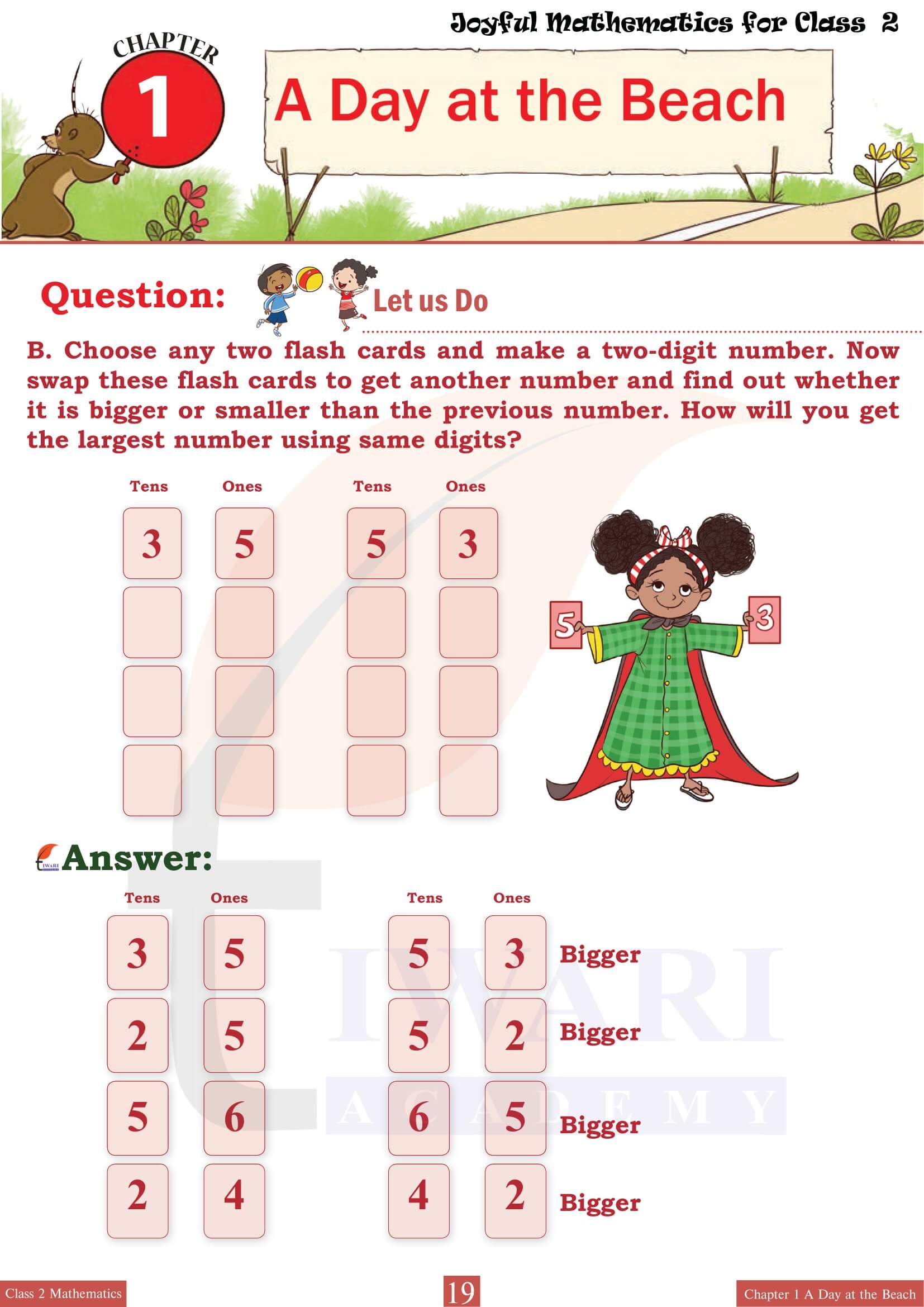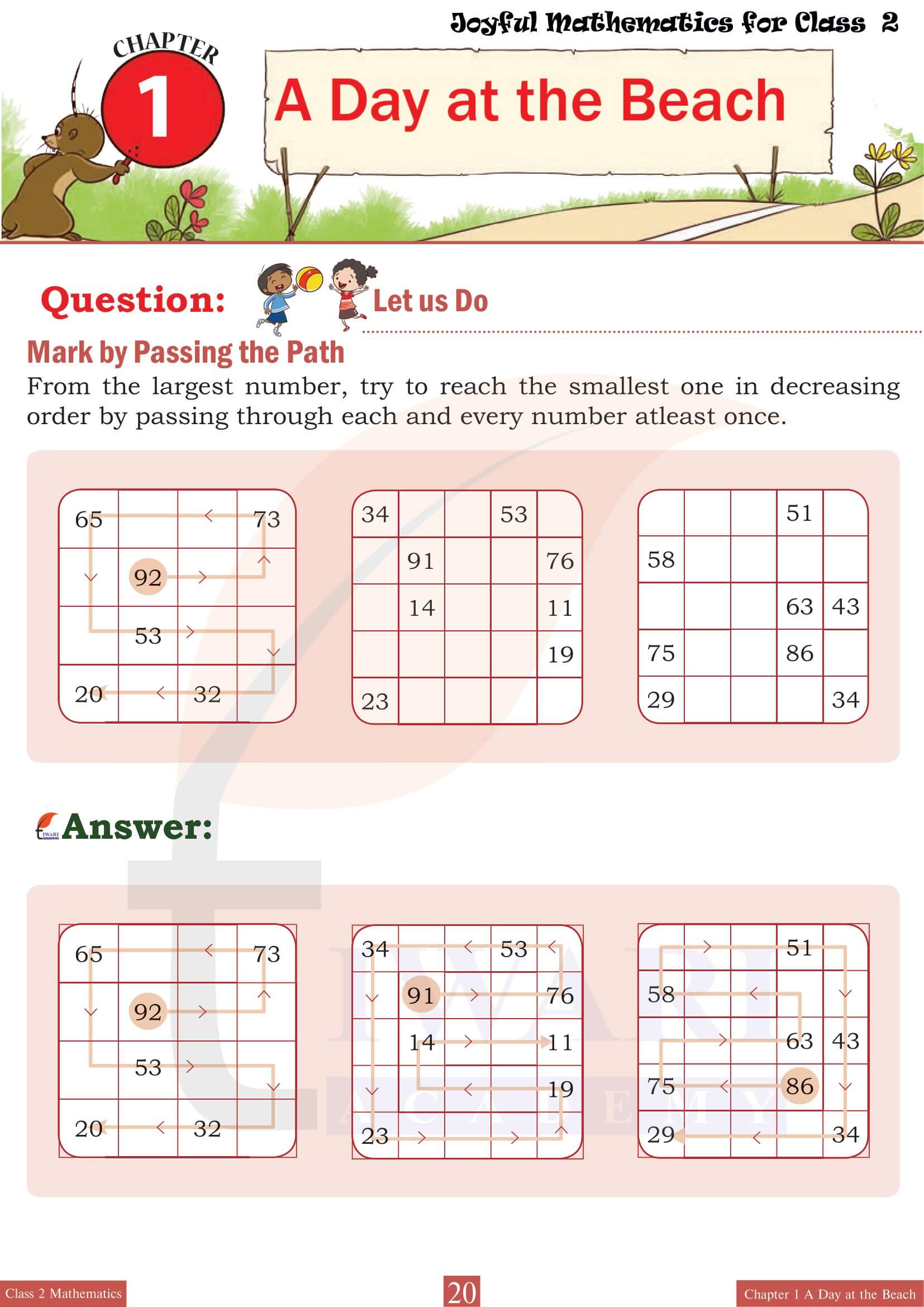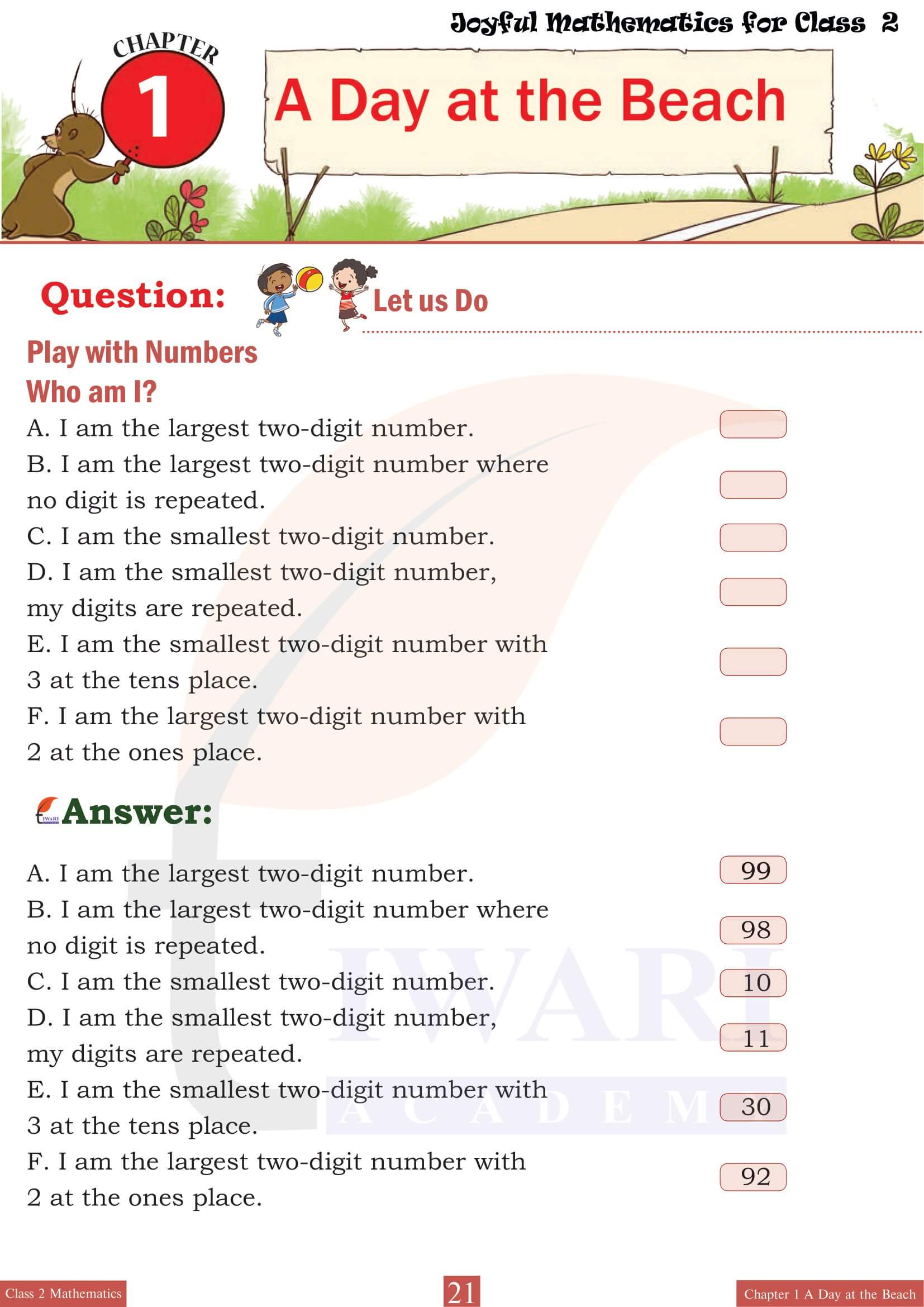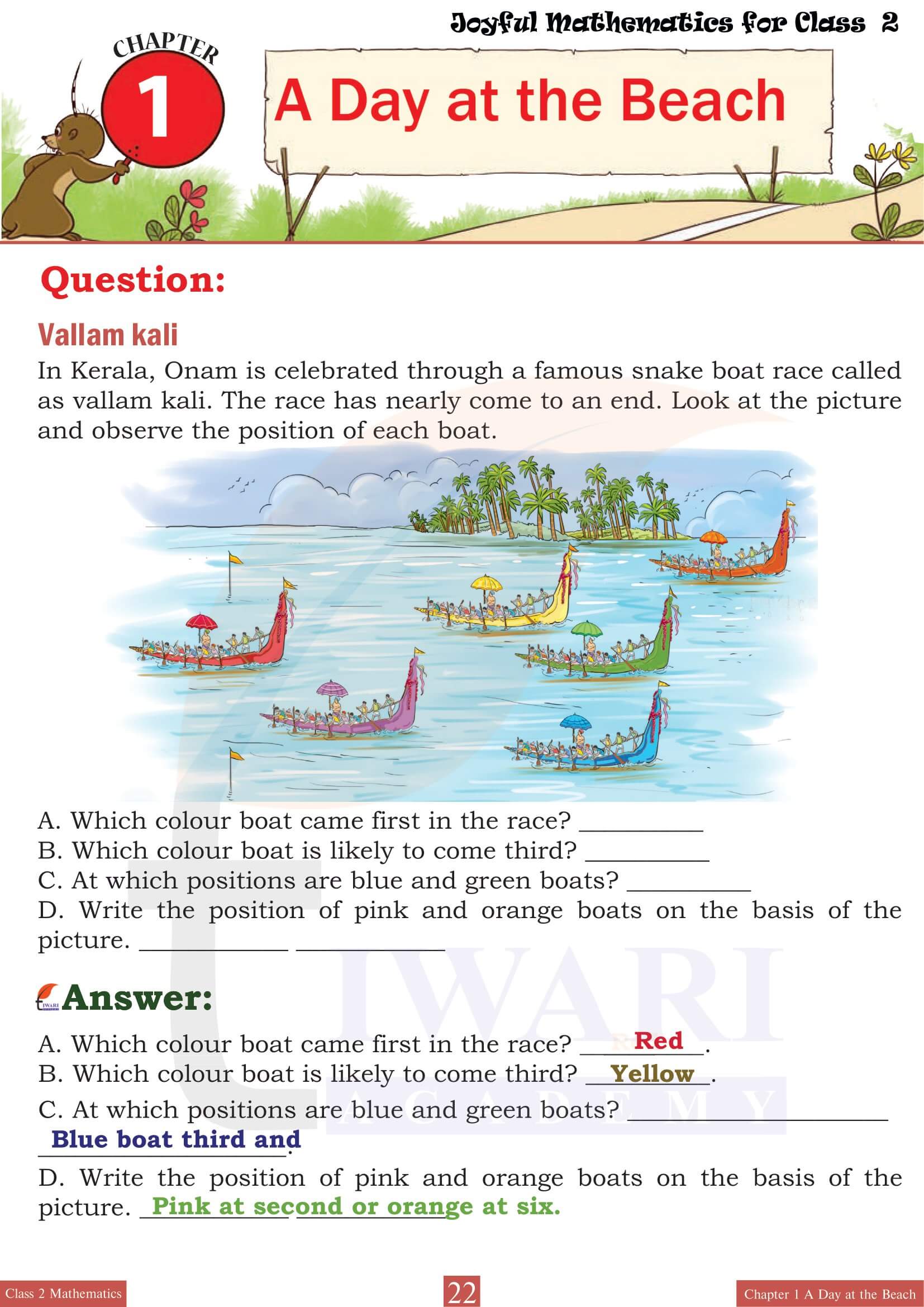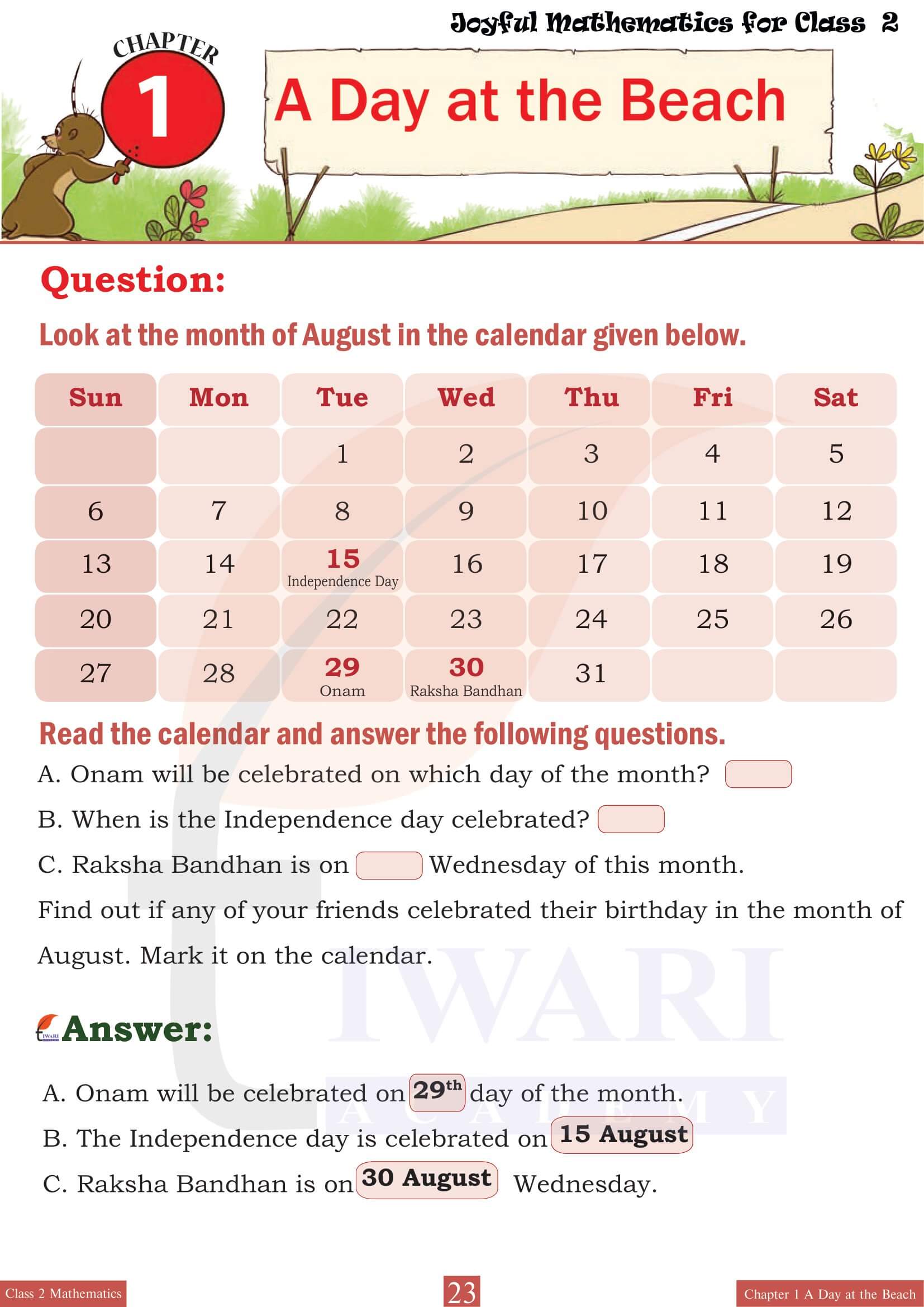NCERT Solutions for Class 2 Joyful Maths Chapter 1 A Day at the Beach (Counting in Groups) in Hindi and English Medium updated for academic session 2025-26. All the answers of class 2 Maths chapter 1 is simplified so that students can understand easily. NCERT Class 2 Maths Textbook Chapter 1 A Day at the Beach, introduces young learners to the concept of counting in groups through engaging activities and fun examples. This chapter from the Joyful Mathematics series uses a beach theme to make learning interactive and relatable for students.
Class 2 Maths Chapter 1 A Day at the Beach Solutions
Teachers can use counting in groups worksheets and interactive games to reinforce the concepts covered in the chapter. Online resources, such as video lessons and PDF worksheets, provide additional practice for students. Parents can support learning by using group counting activities and lesson ideas tailored to Class 2 learners, ensuring a joyful and effective educational experience.
Study Plan for Class 2 Maths
Study Plan for Class 2 all Subjects
For educators and parents, NCERT Class 2 Math Book Chapter 1 solutions and practice questions are valuable tools for understanding the chapter’s key objectives. Teaching resources, including interactive quizzes and lesson plans, are great for building students’ confidence in counting in groups. Joyful Mathematics Class 2 Chapter 1 also encourages creative approaches, such as beach-themed games and fun exercises, to enhance learning. With detailed explanations and assessments available online, students can develop strong foundational skills in group counting. This chapter creates a joyful learning environment, blending fun with education and is an excellent starting point for second-grade mathematics.
Class 2 Maths Chapter 1 A Day at the Beach
Class 2 Maths Chapter 1 A Day at the Beach (focusing at Counting in Groups), introduces young learners to the fundamental concept of counting objects in groups. This mathematical topic is designed to make learning engaging and fun by situating mathematical concepts within a relatable and enjoyable context – a day spent at the beach. By visualizing groups of objects commonly found at the beach, such as shells, pebbles, and starfish, children are encouraged to explore and understand the concept of grouping and counting. This method not only aids in developing their counting skills but also enhances their ability to recognize patterns and organize information efficiently.
Counting in Groups
The chapter 1 of 1st mathematics, begins by setting a vivid scene of a beach where various objects are scattered around. Children are invited to imagine themselves collecting different items like seashells, pebbles, and seaweeds. The narrative encourages students to group these items in twos, fives or tens, thereby introducing them to the concept of counting by multiples. This hands-on approach helps students to grasp the idea of multiplication as repeated addition, which is a foundational skill for more advanced mathematical concepts. Through engaging story-lines and interactive activities, children learn to count in groups, making the learning process both enjoyable and memorable.
As students progress through the chapter, they are presented with increasingly complex grouping scenarios that challenge them to apply what they have learned in new and varied contexts. For instance, they might be asked to help a fictional character group their collection of beach treasures to share equally among friends. Such exercises not only reinforce their understanding of grouping and counting but also introduce basic concepts of division and fair sharing. This integration of different mathematical operations within a single narrative context helps to deepen students’ understanding and retention of the concepts.
Importance of Observation and Critical thinking
Class 1 Math NCERT chapter 1 emphasizes the importance of observation and critical thinking. Children are encouraged to notice patterns and relationships between different groups, fostering a deeper understanding of number sense and mathematical reasoning. By interacting with the beach scenario, they learn to identify and articulate mathematical concepts in everyday contexts, bridging the gap between abstract numbers and the tangible world. This real-world application of math nurtures their curiosity and problem-solving skills.
Ways to learn Class 1 Mathematics
To ensure a comprehensive understanding, class 1 math chapter 1 includes a variety of exercises and activities that cater to different learning styles. Visual learners benefit from colorful illustrations and diagrams that depict grouping in an intuitive and accessible way. Kinesthetic learners engage through hands-on activities, perhaps using actual objects or manipulatives to practice grouping and counting. Auditory learners are supported with stories and rhymes that embed mathematical concepts in memorable verses. This multi-modal approach ensures that every child can access and engage with the material in a way that suits their learning preferences.
A Day at the Beach (Counting in Groups) offers a holistic and immersive learning experience that grounds mathematical concepts in a narrative that is both familiar and exciting for young learners. By the end of the chapter, students are not only able to count objects in groups more efficiently but also develop a broader understanding of how mathematics is integrated into everyday life.
The chapter 1 of class 2, prepares them for more complex mathematical challenges ahead, all while ensuring that their foundational understanding of grouping and counting is solid and robust. Through this chapter, math becomes not just a subject to be studied, but a lens through which the world can be explored and understood.
What is the focus of Class 2 Maths Chapter 1, “A Day at the Beach”?
The chapter focuses on teaching the concept of counting in groups using a beach theme. It engages students with activities like grouping seashells, starfish, and other objects commonly found at the beach. This approach helps children develop their grouping and counting skills in a fun and relatable way. With practice questions, interactive games and worksheets, the chapter ensures foundational understanding. Parents and teachers can also use NCERT solutions and additional resources to reinforce the concepts and make learning enjoyable.
Are there teaching resources available for Class 2 Maths Chapter 1?
Yes, a variety of teaching resources are available, including detailed lesson plans, worksheets, online video lessons and interactive quizzes. Teachers can use these to create an engaging learning experience for students. The Joyful Mathematics Class 2 Chapter 1 explanation encourages the use of creative tools like beach-themed activities and games to reinforce concepts. Assessments and solutions provided in NCERT materials help track progress and ensure students understand group counting. These resources make teaching and learning both effective and enjoyable.
How can parents support learning for Chapter 1 of Class 2 Maths?
Parents can enhance learning by using counting in groups worksheets and engaging their children in beach-themed group counting activities. Downloadable PDFs, video lessons and practice quizzes available online can provide additional support. Encouraging children to solve NCERT Class 2 Maths Chapter 1 solutions and participate in interactive games will build confidence and make learning joyful. Simple activities like sorting toys or arranging objects in groups at home also reinforce the chapter’s concepts, making math practice both practical and fun.
What are some fun ways to teach counting in groups for Class 2 students?
Fun ways to teach counting in groups include interactive games, beach-themed activities, and hands-on exercises like grouping seashells or pebbles. Teachers can use worksheets and NCERT solutions tailored to Class 2 Maths Chapter 1, “A Day at the Beach,” to guide students through structured practice. Online quizzes and video lessons add an exciting digital element to learning. Parents can create activities at home using toys or everyday items to reinforce grouping concepts, ensuring a joyful and engaging approach to building math skills.
